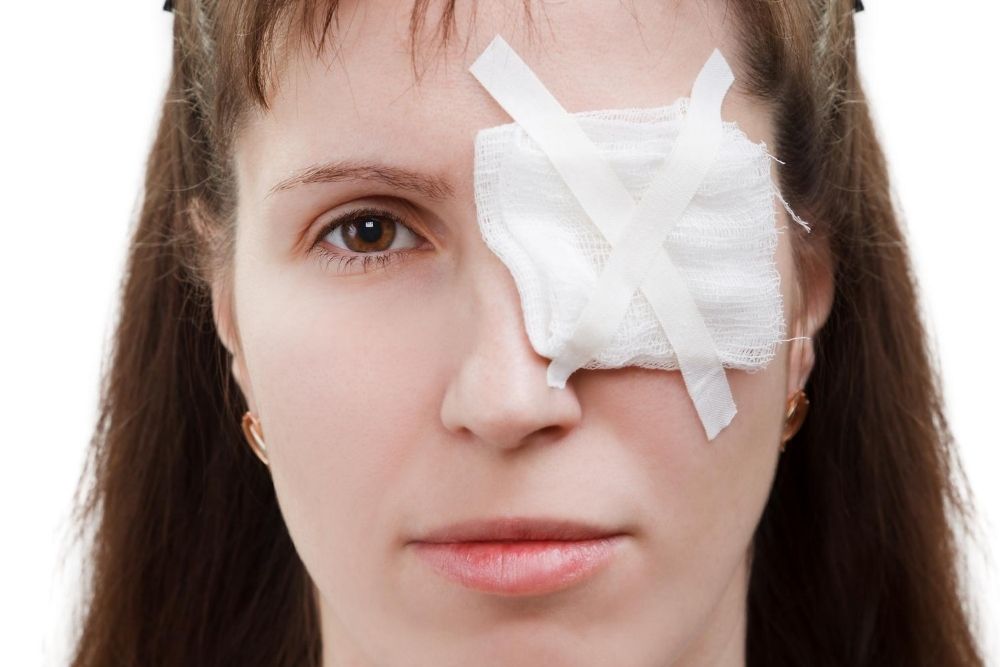Corneal abrasions are the most frequent eye injury that doctors encounter with their patients. The cornea is the clear, curved structure on the surface of our eyes. It is a delicate dome-shaped “window” of our eyes. Any scratch or scrape on the cornea is termed as a corneal abrasion.
Corneal abrasions are often caused by the direct impact of sharp objects on the center of your eye. Pencils, fingernails, dust, or debris can cause scratches on your cornea. This injury can happen to anyone at any age but is more commonly seen on:
- Newborns who accidentally scratch their eyes with untrimmed nails
- Toddlers who had accidents with sharp objects like pencils or pens
- Athletes without safety gear on their eyes. Football and baseball are some of the most common sports that can cause corneal abrasions.
- People who do woodworking, gardening, sewing, or other hobbies that use pointed tools
- Contact lenses wearers with untrimmed fingernails

The Cornea and Its Structure
The cornea is composed of several cell layers and membranes. The top layer is called the epithelium. It is a thin, sensitive layer composed of cells that are similar to skin. Beneath this surface layer is a tough, protective structure named Bowman’s membrane. The epithelium and Bowman’s membrane together comprise only 10% of the thickness of the cornea.
These two layers are the most affected areas of corneal abrasions. Abrasions that reached only the surface epithelium have good odds of healing without long-term effects. Though, more extensive abrasions that affected the Bowman’s membrane are more prone to permanent corneal scars. Scars from corneal abrasions are opaque and may interfere with normal vision.
Most corneal abrasions are superficial injuries that affect only the top layer of the cornea, epithelium. Although these injuries could be very painful, they do not usually cause permanent vision problems, unlike abrasions that penetrate the Bowman’s membrane.
Symptoms
Corneal abrasion may cause signs and symptoms such as:
- A teary and reddish eye
- A feeling that you have a foreign body in your eye
- Headache
- Unusual sensitivity to light
- Blurred vision in the affected eye
Diagnosis
Your doctor will check for obvious corneal injuries, pieces of foreign objects, or scratches in your eyes. For examination of small corneal abrasions, your doctor may use a small drop of a yellow-orange dye, fluorescein, to locate abrasions in your eye. This dye will make any area of abrasion to appear greenish under a special blue light.
Generally, if the corneal abrasion is only minor, no further tests are required. However, if the injury appears to be more serious, your doctor may require a slit lamp to test your vision.
Prevention
It is important to prevent corneal abrasions in the workplace and during sports. Most corneal abrasions can be prevented through:
- Regular trimming of fingernails especially for infants and toddlers.
- Using protective eyewear that covers your entire eyes at work or during sports. Sports goggles with polycarbonate lenses may be advised for athletes who play basketball, handball, badminton, or soccer.
- Wearing protective eyewear fitted by a professional. Misfitting eyewear cannot provide proper protection for your eyes especially against dust and flying debris.
Have a regular cleaning schedule for your contact lenses before using them. dust particles or small foreign objects can cause scratches on your eyes upon wearing dirty contact lenses.

Treatment
Avoid rubbing your eyes when you feel like something is inside your eyes. If you are wearing contact lenses, remove them quickly. Wash your eyes for a few minutes with clean water or use eye drops to help relieve discomfort. If no water or eye drops are available, pull your upper eyelid outward and downward over your lower eyelid. This easy maneuver could help the natural flow of your tears to flush the debris away.
If symptoms persist, call your doctor immediately. If your doctor confirms you have corneal abrasion, antibiotic drops or eye ointment may be prescribed to avoid infection in the injured area. You may also be prescribed to take acetaminophen (Tylenol), ibuprofen (Advil), or other pain relievers to lessen your eye pain.
For more severe corneal abrasions and over sensitivity to light, you may be required by your doctor to take cycloplegic drugs. These medications may reduce eye symptoms by temporary reduction of muscle activity that controls the size of your pupil.
Avoid wearing contact lenses and eye make-ups until the corneal abrasion is fully healed. After completing a complete one day of treatment, your doctor may schedule you for follow up check ups to monitor your vision and eye symptoms. If symptoms are not managed within 24 hours, you may have to opt for other treatment options.
Prognosis
With the right treatment, most shallow or superficial corneal abrasions heal immediately without further complications. In general, the milder and more shallow the abrasion is, the faster the recovery time. More extensive and severe abrasions that have reached the Bowman’s membrane below the epithelium or the top layer of your cornea are more likely to induce permanent corneal scars, These opaque corneal scars could interfere with normal vision or worst, cause blindness.
If deemed necessary, harsh scarring can be treated successfully with a corneal surgery. With proper treatment from medical experts, eye symptoms of a mild corneal abrasion nearly always improve or vanish totally within 24 to 48 hours. For more severe cases of abrasions, symptoms can often last longer.



